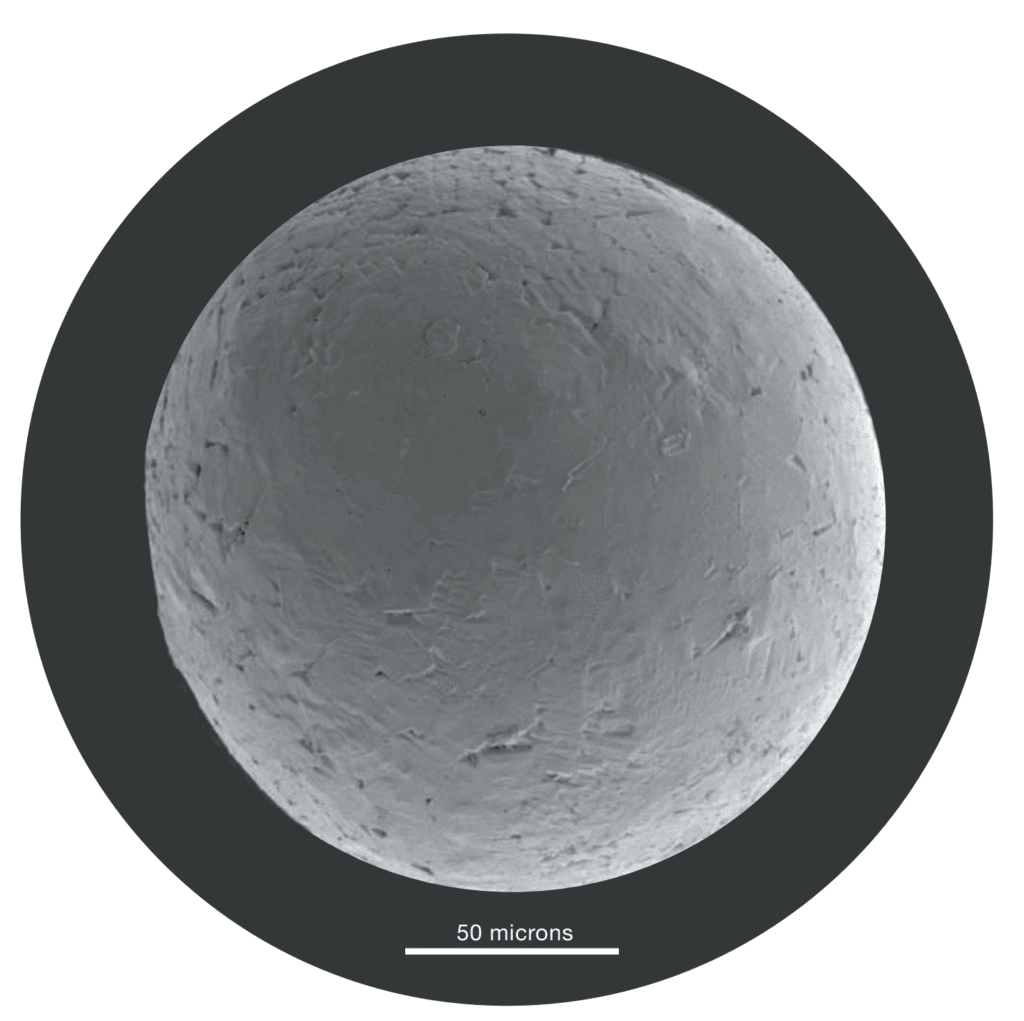Cosmogenous sediment (cosmos = universe, generare = to produce) originates from extraterrestrial sources.
Origin, Composition, and Distribution of Cosmogenous Sediment
Although constituting a very small portion of the total seafloor deposits, cosmogenous sediment represents a significant component, comprising two primary categories: microscopic spherules and macroscopic meteor fragments.

Microscopic spherules are tiny, rounded particles. Certain spherules consist of silicate mineral content and exhibit signs of being generated by extraterrestrial impact phenomena on Earth or other celestial bodies. Such high-energy collisions eject molten crustal matter into space, which then returns to Earth, forming deposits known as tektite fields (tektos = molten). Alternatively, other spherules are primarily composed of iron and nickel and are generated in the asteroid belt located between Mars and Jupiter, where asteroid collisions produce these particles. This material continuously descends to Earth as space dust or micrometeorites, drawn by Earth’s gravitational pull.
Although roughly 90% of micrometeorites undergo destruction due to frictional heating upon atmospheric entry, estimations suggest that nearly 300,000 metric tons (equivalent to 661 million pounds) of space dust accumulate on Earth annually—approximately 10 kilograms (22 pounds) every second, day and night. The iron-rich components of this cosmic dust that reach oceanic environments frequently dissolve in seawater. In contrast, the glassy tektites are more resistant to dissolution and, as such, may exist in minute quantities within various marine sediment layers.
Macroscopic meteor debris is an uncommon occurrence on Earth, yet it can be identified in association with known meteor impact locations. Substantial evidence indicates that, over geological time, meteors have impacted Earth at extremely high velocities, with some of the larger events releasing energy levels comparable to the detonation of several large-scale nuclear weapons. To date, approximately 200 verified meteorite impact sites have been cataloged globally, predominantly situated on continental landmasses, although additional formations are now being detected on the seafloor. The residual material from meteors—commonly referred to as meteorite debris—accumulates in the vicinity of these impacts and typically consists of silicate-based rocks (classified as chondrites) or metallic elements such as iron and nickel (categorized as irons).
Reference: All images and content are taken from Essentials of Oceanography by Alan P. Trujillo and Harold V. Thurman, 12th Edition.
